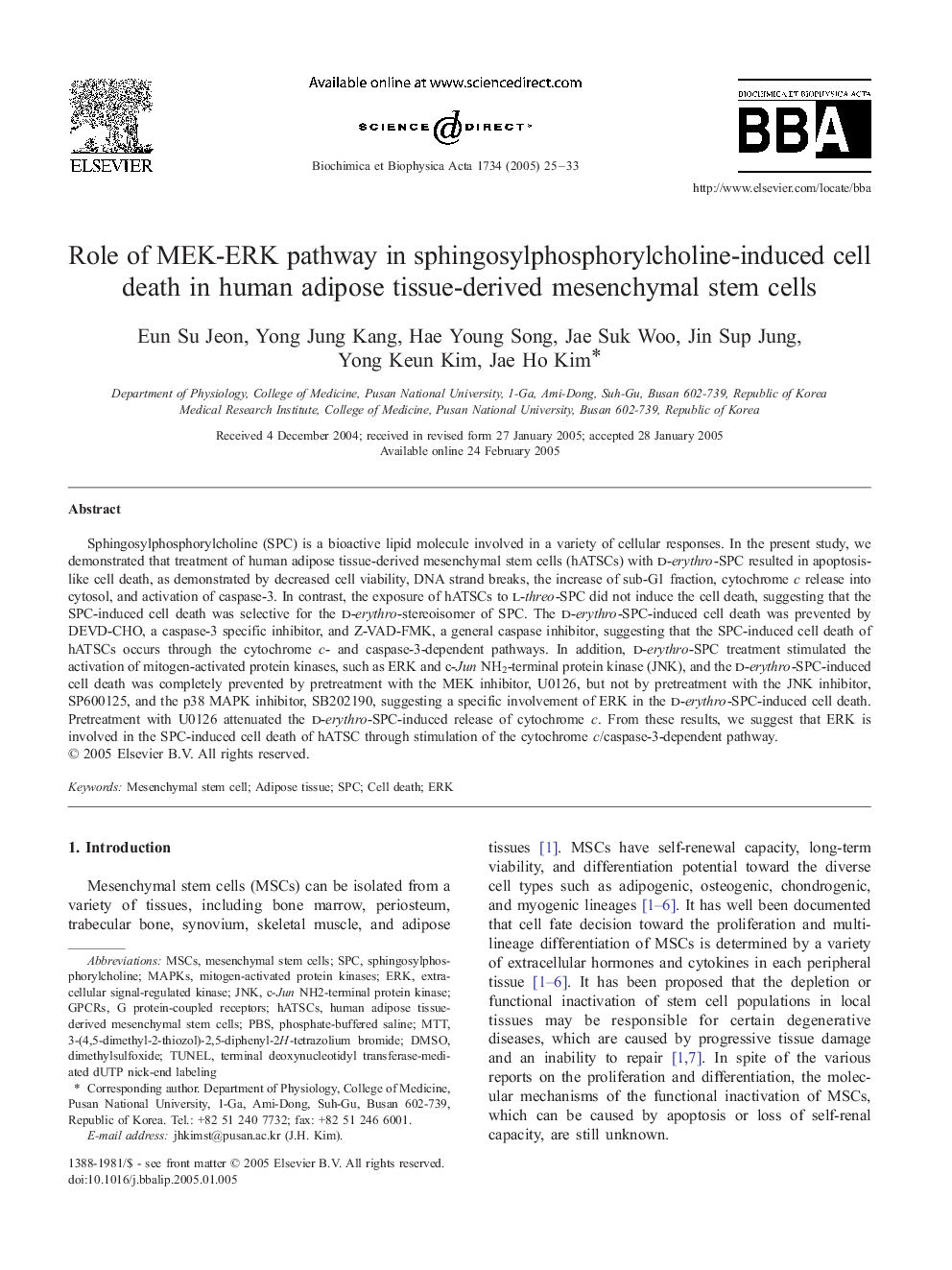| Article ID | Journal | Published Year | Pages | File Type |
|---|---|---|---|---|
| 9886578 | Biochimica et Biophysica Acta (BBA) - Molecular and Cell Biology of Lipids | 2005 | 9 Pages |
Abstract
Sphingosylphosphorylcholine (SPC) is a bioactive lipid molecule involved in a variety of cellular responses. In the present study, we demonstrated that treatment of human adipose tissue-derived mesenchymal stem cells (hATSCs) with d-erythro-SPC resulted in apoptosis-like cell death, as demonstrated by decreased cell viability, DNA strand breaks, the increase of sub-G1 fraction, cytochrome c release into cytosol, and activation of caspase-3. In contrast, the exposure of hATSCs to l-threo-SPC did not induce the cell death, suggesting that the SPC-induced cell death was selective for the d-erythro-stereoisomer of SPC. The d-erythro-SPC-induced cell death was prevented by DEVD-CHO, a caspase-3 specific inhibitor, and Z-VAD-FMK, a general caspase inhibitor, suggesting that the SPC-induced cell death of hATSCs occurs through the cytochrome c- and caspase-3-dependent pathways. In addition, d-erythro-SPC treatment stimulated the activation of mitogen-activated protein kinases, such as ERK and c-Jun NH2-terminal protein kinase (JNK), and the d-erythro-SPC-induced cell death was completely prevented by pretreatment with the MEK inhibitor, U0126, but not by pretreatment with the JNK inhibitor, SP600125, and the p38 MAPK inhibitor, SB202190, suggesting a specific involvement of ERK in the d-erythro-SPC-induced cell death. Pretreatment with U0126 attenuated the d-erythro-SPC-induced release of cytochrome c. From these results, we suggest that ERK is involved in the SPC-induced cell death of hATSC through stimulation of the cytochrome c/caspase-3-dependent pathway.
Keywords
PBSJnkc-Jun NH2-terminal protein kinaseSPCMSCsGPCRsERKDMSOG protein-coupled receptorsMAPKsMTTSphingosylphosphorylcholineAdipose tissueTUNELDimethylsulfoxideMesenchymal stem cellMesenchymal stem cellsHuman adipose tissue-derived mesenchymal stem cellsterminal deoxynucleotidyl transferase-mediated dUTP nick-end labelingPhosphate-buffered salineCell deathextracellular signal-regulated kinasemitogen-activated protein kinases
Related Topics
Life Sciences
Biochemistry, Genetics and Molecular Biology
Biochemistry
Authors
Eun Su Jeon, Yong Jung Kang, Hae Young Song, Jae Suk Woo, Jin Sup Jung, Yong Keun Kim, Jae Ho Kim,
